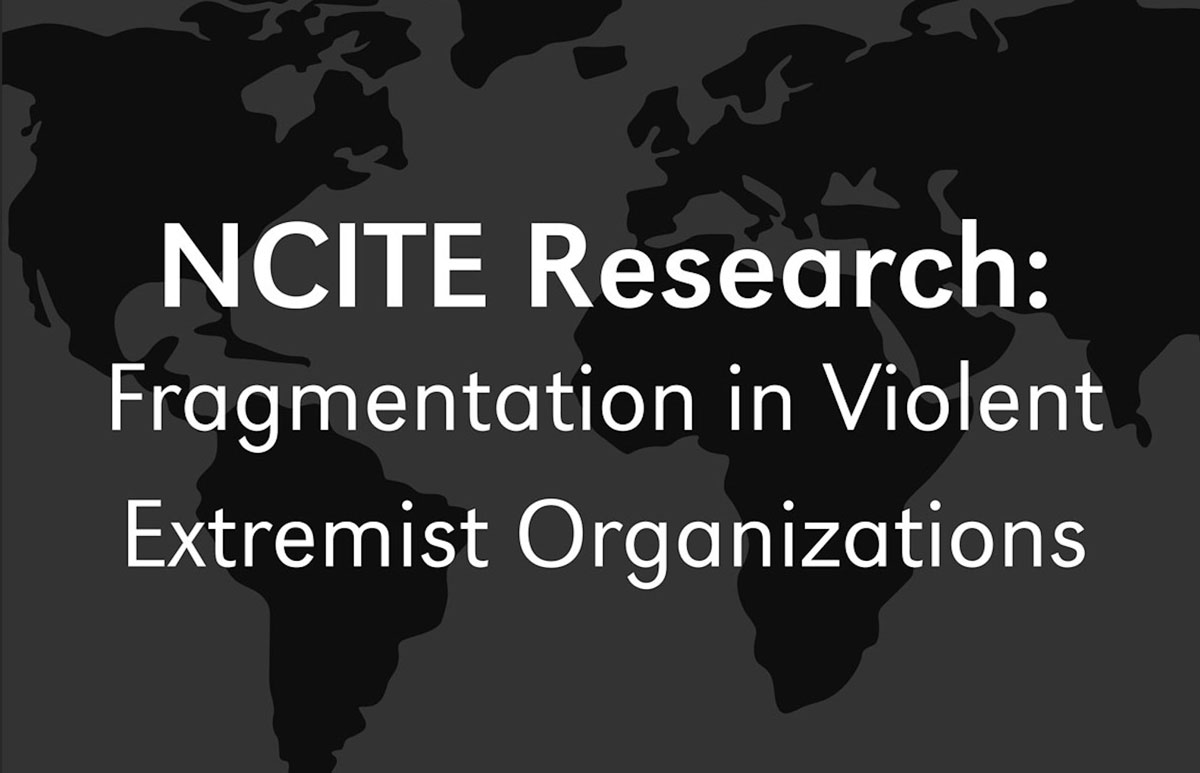NCITE Research: Splinter groups less violent than parent organizations
In a new article, researchers Kaitlyn Robinson and Iris Malone find that militant splinter factions tend to be less violent than their parent organizations. Robinson and NCITE principal investigator Martha Crenshaw summarize.
- published: 2023/04/13
- contact: NCITE Communications - NCITE
- email: ncite@unomaha.edu

In a new article, published in the Journal of Conflict Resolution, researchers Kaitlyn Robinson and Iris Malone find that militant splinter factions tend to be less violent than their parent organizations. The findings are the result of an NCITE-funded research project spearheaded by Martha Crenshaw, NCITE principal investigator and senior fellow emerita at Stanford University's Center for International Security and Cooperation. Robinson and Crenshaw summarize the key points of the article below.
By Kaitlyn Robinson and Martha Crenshaw
Research question: Are splinters (see footnote) of militant, terrorist, insurgent, and rebel groups more violent than their parent organizations?
Existing explanations: Existing research on violent extremist or terrorist groups portrays splinter groups as more violent than the parent organizations from which they break away. This line of research suggests that splinters are driven to commit violence by their more extreme ideologies, by the need to build organizational strength, and by pressures to compete with rivals. If true, these patterns would suggest that counterterrorism and counterinsurgency tactics that encourage organizational splintering (e.g., leadership decapitation) may be counterproductive and contribute to more complex and violent conflict environments.
Main argument: Though widely held, the assumption that splinters are particularly violent has not been systematically tested. In an article in the Journal of Conflict Resolution, “Militant Splinter Groups and the Use of Violence,” Kaitlyn Robinson and Iris Malone develop and test an alternative explanation for splinter behavior. In fact, they argue the opposite of the conventional wisdom. They contend that splinter groups are actually less violent than their parents.
Why would this be the case? Splinter groups break away from existing organizations when their grievances are not addressed internally. Grievances often include challenges to the “old guard” leadership and demands for internal reform. This frustration is most likely to translate into splintering when the parent group is managed by a powerful leader with centralized control over group policy, making bottom-up appeals to address grievances unlikely to succeed. After breaking away from these well-organized parents, splinter groups will be unable to match their parents’ organizational strength and ability to mount attacks. Even if highly motivated to use violence, splinter groups lack established organizational infrastructure (such as large membership, task specialization, transnational connections, and access to resources) to plan and carry out violence. Thus, we should expect splinters to commit less violence than their parents simply because they are less capable of doing so.
Evidence: This logic is tested with an original dataset on parent and splinter groups and a pair of comparative case studies drawn from the jihadist milieu. Analysis of the data demonstrates effectively that splinter groups carry out fewer attacks than parent groups. Robinson and Malone also conducted a comparative case study of two splinters that formed from Jemaah Islamiyya (JI) in Indonesia. The splinters that emerged from JI were relatively weaker and unable to match JI’s levels of violence. It was their relative capacity rather than their motivation that led to reduced violence.
Conclusions: These findings challenge a long-standing claim about the nature and behavior of splinter groups. This research also suggests that more attention should be paid to the emergence of militant groups – their origin stories. How do organizational and environmental circumstances shape the formation and attributes of militant groups? Splintering from an established violence organization is only one track to militant group formation. For example, some violent extremist groups break away from much larger non-violent social movements or political parties.
These findings also suggest that counterterrorism and counterinsurgency policy could focus on degrading organizations (e.g., by removing leaders, disrupting communications, or fostering internal distrust) with reduced concern about the potential violent consequences of organizational fragmentation. Fragmentation could lead to the formation of relatively weaker splinter groups and produce less rather than more violence. In year 4, this general theoretical model will be tested against data from far-right violent extremist groups specifically. For example, it is possible that splintering will have different consequences when parents are poorly or loosely organized, as is commonly the case among far-right groups and movements.